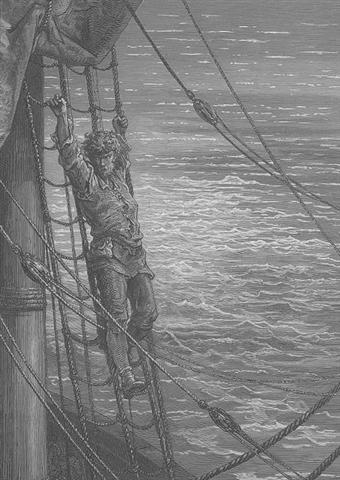2. What is the destination of my Ship? Possibly the Sea in the sky (Capricornus, Aquarius, Pisces) once originated as the idea of a dark non-living part of the year - 'a year in straw' (see in chapter 26): ... In north Asia the common mode of reckoning is in half-year, which are not to be regarded as such but form each one separately the highest unit of time: our informants term them 'winter year' and 'summer year'. Among the Tunguses the former comprises 6½ months, the latter 5, but the year is said to have 13 months; in Kamchatka each contains six months, the winter year beginning in November, the summer year in May; the Gilyaks on the other hand give five months to summer and seven to winter. The Yeneseisk Ostiaks reckon and name only the seven winter months, and not the summer months. This mode of reckoning seems to be a peculiarity of the far north: the Icelanders reckoned in misseri, half-years, not in whole years, and the rune-staves divide the year into a summer and a winter half, beginning on April 14 and October 14 respectively. But in Germany too, when it was desired to denote the whole year, the combined phrase 'winter and summer' was employed, or else equivalent concrete expressions such as 'in bareness and in leaf', 'in straw and in grass' ... Far south there should also be a pair of separate 'years'. There too summer and winter are obviously different entities. The Sea in the sky would be like the deep lethal sea (moana) in contrast to tai (the coastal waters of plenty):
Perhaps there is no description of 'Sea' in the G text. The Sea in the sky is 3 / 12 of the solar zodiac, leaving 9 / 12 to Land and with 472 glyph positions we maybe should search for twice ¾ of a 'year: 2 * ¾ * 314 = 472 ¾ * 472 = 354 (= 12 * 29½) ¼ * 472 = 118 (= 4 * 29½) South of the equator everything is seen upside down and there are sailable waters both above and below the doldrums. The equatorial belt is like the surface of a mirror: "The Pacific doldrums were notably described in Samuel Taylor Coleridge's Rhyme of the Ancient Mariner:
The colloquial expression was used in Norman Juster's children's book Phantom Tollbooth, in which a place called 'The Doldrums' is inhabited by the Lethargarians who follow the same list of activities every day." (Wikipedia)
(Illustration by Gustave Doré, 1878.) In other words, between the pair of sailable waters (which I suggest correspond to a pair of 'Lands' in the Sky) there is a 'sea of death' (corresponding to a stretch of 'Sea' in the Sky). "lethal ... deadly, mortal. XVII. - L., lethālis, f. lēthum, var. of lētum death, by assoc. with Gr. léthē oblivion, used as a proper name in L. (whence Lethe) for a river in Hades, the water of which, when drunk, produced oblivion of the past ..." (The Oxford Dictionary of English Etymology) Clearly our 'Ship' is in need also of 'painted side boards' - external 'planks' in form of e.g. dictionaries explaining the origin of words. These will protect us from the billows of the sea. |
